Pregnancy is a time of profound physical and emotional transformation. As the body undergoes significant changes to nurture and accommodate a growing life, expectant mothers often face unique health challenges. In this journey, osteopathy emerges as a remarkably supportive and effective approach to wellness. MHV Clinic is at the forefront of providing osteopathic care tailored for the needs of pregnant women, ensuring a harmonious balance between health and the remarkable process of childbearing.At its core, osteopathy is a holistic form of therapy that emphasises the interconnection of all body systems. It focuses on enhancing the body’s natural ability to self-heal and self-regulate, making it particularly relevant and safe for pregnancy. Osteopathic treatment during pregnancy is not just about addressing specific symptoms; it’s about nurturing the overall well-being of the mother-to-be. This holistic approach aligns perfectly with the physiological, anatomical, and emotional changes experienced during pregnancy, offering gentle yet effective care.The safety of osteopathic treatment for expectant mothers is a primary consideration at MHV Clinic. Our osteopathic practitioners are highly trained in prenatal care, understanding the nuances and specific needs of pregnant women. They use gentle, non-invasive techniques that are safe for both the mother and the developing fetus. These techniques are designed to alleviate discomfort, improve function, and enhance the body’s ability to adapt to the changes of pregnancy.Osteopathy’s holistic nature encompasses not just physical health but also emotional and mental well-being, which are equally important during pregnancy. By providing a nurturing and supportive environment, osteopathic care at MHV Clinic helps expectant mothers to navigate the physical demands and emotional rollercoaster of pregnancy with greater ease and confidence.
Understanding Osteopathy During Pregnancy
During pregnancy, a woman’s body undergoes significant physiological and structural changes to accommodate the growing fetus. These changes, while natural, can often lead to discomfort, pain, and mobility issues. Osteopathy, with its whole-body approach, aligns seamlessly with prenatal care. It offers a holistic method to address various pregnancy-related concerns, aiding in the management of symptoms and enhancing overall well-being.Prenatal osteopathic care focuses on adapting the body to the changes of pregnancy. It involves techniques tailored to relieve strain and stress on the musculoskeletal system, improve circulation, and assist the body’s natural adjustments during pregnancy. Osteopathic treatment aims to create a more comfortable gestational period and potentially ease the birthing process.
The Safety Profile of Osteopathic Treatment in Pregnancy
The non-invasive and gentle nature of osteopathic treatment makes it a safe and effective choice for pregnant women. Unlike some conventional medical treatments, osteopathy does not rely on medication, making it an appealing alternative for expecting mothers looking to avoid pharmacological interventions.

Our osteopathic practitioners are trained to apply techniques that are safe and comfortable for both the mother and the unborn baby. These techniques are carefully selected and modified to accommodate the unique needs of each trimester. For instance, special attention is given to avoid direct pressure on the abdomen, and positions that might be uncomfortable or risky for pregnant women are avoided.

Common safety concerns among pregnant women regarding alternative therapies include the risk of inducing premature labour or harming the fetus. Osteopathy, with its emphasis on gentle, non-invasive treatment, greatly minimises these risks. Our team of osteopaths at MHV Clinic are well-versed in the anatomy and physiological changes of pregnancy, enabling them to provide care that is not only effective but also safe.The safety profile of osteopathic treatment during pregnancy is supported by its focus on enhancing natural body processes rather than intervening with them. It’s a therapy that works in tandem with the body’s innate abilities, making it a harmonious choice for prenatal care. Expectant mothers can find comfort in the fact that osteopathy offers a way to alleviate discomfort and maintain wellness during pregnancy in a manner that respects both their health and that of their developing baby.
Over
10
+
Patients
Over
0
+
Years of Experience
Over
0
+
Treatments
Key Benefits of Osteopathy for Expectant Mothers
Pregnancy is a time of profound change and adaptation for a woman’s body. During this period, the body undergoes significant transformations to accommodate the growing fetus, leading to various physical and emotional challenges. Osteopathy, with its holistic approach, offers numerous benefits for expectant mothers, assisting in managing these changes more comfortably and healthily.
Understanding the Role of Osteopathy in Pregnancy
Osteopathy, a form of manual therapy, emphasises the body’s ability to heal and regulate itself. It involves gentle manipulations, stretching, and massaging of the body’s muscles, joints, and spine. This approach is particularly beneficial during pregnancy, a time when many traditional medications and treatments may be limited due to potential risks to the fetus.

The primary goal of osteopathy in pregnancy is to support the mother’s body as it adapts to the changes brought on by pregnancy. These changes include the body’s centre of gravity shifting, increased weight, hormonal fluctuations, and the physical demands of carrying a baby. Osteopathy helps in maintaining balance, alleviating strain on the body, and enhancing overall wellbeing.

Alleviating Common Pregnancy DiscomfortsPregnancy, while a time of great joy, can also bring a host of discomforts. Osteopathic treatment is adept at addressing many of these issues, offering a safe and effective way to find relief.
Back Pain Relief
One of the most common complaints during pregnancy is back pain. As the baby grows, the added weight and altered posture can put
significant strain on the back. Osteopathy helps in realigning the spine and
pelvis, reducing pressure on the back muscles and nerves. It can also improve
flexibility and strength in the back, helping to prevent pain from occurring in
the first place.
Pelvic Comfort
The pelvis undergoes significant changes during pregnancy to
prepare for childbirth. These changes can sometimes lead to discomfort and
instability. Our osteopathic techniques can assist in maintaining pelvic balance,
thus reducing pain and discomfort. Proper pelvic alignment is also crucial for a
smoother delivery process.
Improved Circulation
Osteopathic treatment can enhance blood flow and
lymphatic drainage, reducing the risk of swelling, varicose veins, and
haemorrhoids, which are common during pregnancy.
Digestive Relief
As the uterus expands, it can put pressure on the digestive
organs, leading to issues like heartburn or constipation. Osteopathy can help by
improving the mobility and function of these organs, providing relief from
gastrointestinal discomfort.
Stress and Tension Release
Pregnancy can be a stressful time, and stress can
manifest physically in the form of muscle tension, headaches, and fatigue.
Osteopathy offers techniques to release this tension and promote relaxation,
which is beneficial for both the mother and the developing fetus.
Breathing SupportAs the pregnancy progresses, the growing uterus can
restrict lung capacity, making breathing more challenging. Our treatments can
help in opening the diaphragm and improving rib mobility, aiding in more
comfortable and efficient breathing.
Preparing for Childbirth
Osteopathy can play a role in preparing the body for
childbirth. By ensuring the pelvis and spine are correctly aligned, it can
potentially facilitate a smoother labour and delivery process.
Postnatal Recovery
Postpartum, osteopathy can assist in the recovery process,
helping to realign the body, strengthen the pelvic floor muscles, and address
any residual pain from childbirth.Osteopathy offers a multitude of benefits for expectant mothers, providing a holistic and non-invasive approach to managing the physical demands of pregnancy. It not only helps in alleviating common discomforts but also prepares the body for childbirth and aids in recovery post-delivery.

5/5
I have been to many osteopath before at least 3- 4 different ones, but no one has been able to get to the root of the problem. It’s normally a few clicks on the neck and spine and that is it. But, Poonam really focuses on the issue and loosens the tighten muscle. She advises on what exercises to do, pillow support for the neck and much more. My neck and shoulders feel much better now.

John Doe
MHV Clinic Patient
Over
10
+
Patients
Over
0
+
Years of Experience
Over
0
+
Treatments
Preparing for Childbirth with Osteopathy
Preparing for childbirth is a crucial time for expectant mothers, and osteopathy can play a significant role in this preparation. At MHV Clinic, we recognise the unique needs of women during pregnancy and offer specialised osteopathic treatments aimed at enhancing the body’s readiness for childbirth. Osteopathy, with its gentle, non-invasive approach, is ideally suited for the prenatal period, offering a variety of benefits to expectant mothers.Osteopathic treatment during pregnancy focuses on optimising the body’s alignment, flexibility, and strength. This is achieved through gentle manipulations and techniques that are safe for both mother and baby. These techniques aim to alleviate the common discomforts of pregnancy such as back pain, pelvic pain, and sciatica, thus improving the overall quality of life during this crucial period.One of the key aspects of osteopathy in preparation for childbirth is its ability to support the natural changes that occur in a woman’s body during pregnancy. As the body adapts to accommodate the growing baby, shifts in posture and weight distribution can lead to discomfort and stress on various parts of the body. Osteopathy helps in addressing these changes by promoting better balance and alignment, reducing physical strain, and enhancing mobility and flexibility.Furthermore, osteopathic treatment can improve blood circulation and lymphatic drainage, which is beneficial for both mother and fetus. Enhanced circulation ensures that essential nutrients are efficiently delivered to the baby, while effective lymphatic drainage can help in reducing swelling and fluid retention, common in later stages of pregnancy.By preparing the body for childbirth, osteopathy contributes not only to a more comfortable pregnancy but also potentially to a smoother labour and delivery process. The holistic approach of osteopathy, which considers the interconnectedness of all body systems, ensures that our treatments are tailored to the individual needs of each expectant mother, supporting her physical and emotional well-being as she prepares for the arrival of her baby.
Get in Touch with MHV Clinic Today
CALL NOW
Optimising Pelvic Alignment for an Easier Delivery
The importance of pelvic alignment in the context of labour and delivery cannot be overstated. At MHV Clinic, our osteopathic approach pays particular attention to the pelvic region, understanding its crucial role in the childbirth process.

The pelvis is not only the cradle that supports the growing fetus but also forms part of the birth canal through which the baby will pass during delivery. Optimal pelvic alignment is therefore essential for easing the childbirth process. Misalignments or restrictions in the pelvic area can lead to complications such as prolonged labour, difficulty in baby’s positioning, and increased likelihood of interventions like caesarean sections.

Through gentle osteopathic manipulations, we aim to ensure that the pelvic bones, muscles, and ligaments are well-aligned and functioning optimally. This includes addressing any asymmetry or tension in the pelvic area that could hinder the labour process. Proper alignment of the pelvis can provide more space for the baby to descend and can facilitate better positioning of the baby for delivery.Additionally, optimising pelvic alignment can also contribute to pain relief during pregnancy. It helps in balancing the stresses and strains placed on the body, thereby reducing discomfort in the lower back, hips, and pelvic region. This not only contributes to a more comfortable pregnancy but also to a state of physical readiness for the demands of childbirth.Our osteopathic treatments at MHV Clinic are tailored to support the natural process of childbirth. By focusing on pelvic alignment, we aim to empower expectant mothers with a sense of physical preparedness and confidence as they approach labour and delivery. This proactive approach to maternal health underscores our commitment to providing comprehensive care that addresses the unique needs of women during this transformative phase of life.
Get in Touch with MHV Clinic Today
CALL NOW
At MHV Clinic, we continuously review and incorporate the latest research
findings into our practice to ensure that our patients receive the most up-todate and effective treatments.
BOOK NOW
CONTACT US
Get in Touch with MHV Clinic Today
CALL NOW
Postnatal Osteopathy: Continuing Care After Childbirth
Postnatal osteopathy plays a crucial role in supporting the recovery and wellbeing of new mothers. The process of childbirth, whether vaginal or via caesarean section, can significantly impact a woman’s body, leading to various physical challenges. Osteopathy, with its holistic and non-invasive approach, offers a supportive path to healing and recovery during the postnatal period.
Supporting Postnatal Recovery
Understanding the Physical Impact of Childbirth: Childbirth is a strenuous process that can lead to various physical issues such as pelvic imbalances, back pain, and muscular fatigue. The body undergoes significant changes during pregnancy, and the process of returning to pre-pregnancy condition can be gradual and sometimes challenging.
Osteopathic Assessment and Treatment
Postnatal osteopathy begins with a
comprehensive assessment of the new mother’s musculoskeletal system.
Osteopaths evaluate the condition of the spine, pelvis, and other affected
areas, considering the physical strains of childbirth and childcare activities like
breastfeeding and carrying the baby.
Relieving Pain and Discomfort
One of the primary goals of postnatal
osteopathy is to alleviate pain and discomfort that arise from childbirth and
caring for a newborn. Osteopathic techniques such as gentle manipulations,
soft tissue massage, and cranial osteopathy can help relieve back pain, pelvic
discomfort, and tension headaches.
Restoring Pelvic Balance and Alignment
Childbirth can lead to pelvic
misalignments, which can cause a range of issues including incontinence, back
pain, and sexual dysfunction. Osteopathic treatment focuses on restoring pelvic
alignment and balance through gentle manipulations, which can also aid in the
recovery of the pelvic floor muscles.
Supporting Overall Well-being
Postnatal osteopathy also plays a role in
supporting the overall well-being of new mothers. It can help manage stress
and fatigue, which are common in the postpartum period. Techniques that
promote relaxation and improve sleep can be particularly beneficial.

 Guidance on Postnatal Exercise and Activities
Guidance on Postnatal Exercise and Activities
Our osteopaths provide advice
on appropriate postnatal exercises and activities. This guidance is essential to
ensure that new mothers engage in activities that support recovery and avoid
those that could exacerbate any postnatal conditions.
Collaborative Care
In some cases, we may work in conjunction with other
healthcare professionals, such as midwives, physiotherapists, or general
practitioners, to provide comprehensive postnatal care. This collaborative
approach ensures that new mothers receive holistic support tailored to their
individual needs.
Long-term Health Maintenance
Beyond immediate postnatal recovery,
osteopathy can play a role in maintaining long-term musculoskeletal health.
Regular osteopathic check-ups can help address any ongoing issues and
prevent future musculoskeletal problems.
Postnatal Recovery
Postpartum, osteopathy can assist in the recovery process,
helping to realign the body, strengthen the pelvic floor muscles, and address
any residual pain from childbirth.
Postnatal osteopathy offers a vital support system for new mothers. Through gentle, personalised treatments, it aids in the recovery process, alleviates discomfort, and contributes to the overall physical and emotional well-being of women navigating the postpartum period.At MHV Clinic, our goal is to guide you through this decision-making process,
ensuring you have a clear understanding of both approaches. Our team is
dedicated to helping you choose the treatment path that aligns best with your
health needs and personal preferences, setting you on the course to optimal
nerve health and overall wellness.
BOOK NOW
CONTACT US
At MHV Clinic, we take pride in offering top-tier osteopathic care, ensuring that
each patient receives the attention, care, and expertise needed to achieve
optimal health and relief from nerve-related discomfort.
BOOK NOW
CONTACT US
At MHV Clinic, we take pride in offering top-tier osteopathic care, ensuring that
each patient receives the attention, care, and expertise needed to achieve
optimal health and relief from nerve-related discomfort.
BOOK NOW
CONTACT US
Osteopathy for Pregnant Women: A Gentle Journey to Wellness
Managing Postural Changes and Strengthening the Body Post-Pregnancy
Pregnancy is a time of profound physical and emotional transformation. As the body adapts to accommodate the growing life within, it undergoes significant changes, particularly in posture. Post-pregnancy, many women face challenges in regaining their pre-pregnancy posture and strength. This is where osteopathy, a holistic approach to healthcare, plays a crucial role.


Understanding Post-Pregnancy Postural Changes
During pregnancy, a woman’s centre of gravity shifts, leading to alterations in posture. These changes can persist post-pregnancy, manifesting as:– Increased lower back curve (lordosis) due to abdominal muscle stretching.
– Altered spinal alignment and pelvic tilt.
– Changes in the way weight is carried and distributed.These postural changes can lead to discomfort and musculoskeletal pain. Fortunately, our clinic offers a pathway to address these issues effectively.

5/5
I have been to many osteopath before at least 3- 4 different ones, but no one has been able to get to the root of the problem. It’s normally a few clicks on the neck and spine and that is it. But, Poonam really focuses on the issue and loosens the tighten muscle. She advises on what exercises to do, pillow support for the neck and much more. My neck and shoulders feel much better now.

John Doe
MHV Clinic Patient
The Osteopathic Approach to Post-Pregnancy Recovery
Post-pregnancy, Osteopathy Focuses on:
Restoring AlignmentGentle manipulative techniques are used to realign the
spine and pelvis, alleviating stress on joints and muscles.
Strengthening the CoreOsteopathy aids in strengthening the core muscles,
crucial for supporting the spine and pelvis, thus enhancing overall posture.
Improving FlexibilityOsteopathic treatment includes exercises to improve
flexibility, helping the body regain its natural posture and movement.
Reducing Pain
By addressing the root cause of postural changes, osteopathy
helps in reducing pain and discomfort associated with these changes.

 Personalised Care
Personalised Care
Each woman’s post-pregnancy journey is unique. Our
osteopaths at MHV Clinic offer personalised care tailored to individual needs
and recovery goals.
Collaborative Care
In some cases, we may work in conjunction with other
healthcare professionals, such as midwives, physiotherapists, or general
practitioners, to provide comprehensive postnatal care. This collaborative
approach ensures that new mothers receive holistic support tailored to their
individual needs.
Long-term Health Maintenance
Beyond immediate postnatal recovery,
osteopathy can play a role in maintaining long-term musculoskeletal health.
Regular osteopathic check-ups can help address any ongoing issues and
prevent future musculoskeletal problems.
Postnatal Recovery
Postpartum, osteopathy can assist in the recovery process,
helping to realign the body, strengthen the pelvic floor muscles, and address
any residual pain from childbirth.
Encouraging Holistic Recovery
Post-pregnancy, the goal is not just to return to pre-pregnancy posture but to foster overall physical and emotional well-being. Osteopathy supports this holistic recovery, ensuring mothers not only regain their physical strength but also feel rejuvenated and balanced.For more information or to begin your journey with us, contact MHV Clinic
today. Embrace the path to better health, where your well-being is our utmost
priority.
BOOK NOW
CONTACT US
Supporting Your Pregnancy & Postpartum Well-being through Expert
Osteopathic Care
Osteopathy offers a compassionate, effective approach to managing the physical demands of pregnancy and post-pregnancy changes. It provides:– Relief from pregnancy-related discomfort.
– Support in managing postural changes post-pregnancy.
– A holistic pathway to recovery, focusing on total well-being.Expecting and new mothers can greatly benefit from our osteopathic care at MHV Clinic, experiencing enhanced comfort and well-being during one of life’s most remarkable journeys.Embark on a journey of gentle, effective care with MHV Clinic. If you’re an expecting or new mother looking to manage postural changes and strengthen your body post-pregnancy, we invite you to schedule a consultation with our friendly team at MHV Clinic. Our experienced osteopaths are dedicated to supporting you through every step of your motherhood journey.Contact us today and take the first step towards a balanced and healthy postpregnancy recovery
BOOK NOW
CONTACT US
 Our osteopathic practitioners are trained to apply techniques that are safe and comfortable for both the mother and the unborn baby. These techniques are carefully selected and modified to accommodate the unique needs of each trimester. For instance, special attention is given to avoid direct pressure on the abdomen, and positions that might be uncomfortable or risky for pregnant women are avoided.
Our osteopathic practitioners are trained to apply techniques that are safe and comfortable for both the mother and the unborn baby. These techniques are carefully selected and modified to accommodate the unique needs of each trimester. For instance, special attention is given to avoid direct pressure on the abdomen, and positions that might be uncomfortable or risky for pregnant women are avoided. Common safety concerns among pregnant women regarding alternative therapies include the risk of inducing premature labour or harming the fetus. Osteopathy, with its emphasis on gentle, non-invasive treatment, greatly minimises these risks. Our team of osteopaths at MHV Clinic are well-versed in the anatomy and physiological changes of pregnancy, enabling them to provide care that is not only effective but also safe.The safety profile of osteopathic treatment during pregnancy is supported by its focus on enhancing natural body processes rather than intervening with them. It’s a therapy that works in tandem with the body’s innate abilities, making it a harmonious choice for prenatal care. Expectant mothers can find comfort in the fact that osteopathy offers a way to alleviate discomfort and maintain wellness during pregnancy in a manner that respects both their health and that of their developing baby.
Common safety concerns among pregnant women regarding alternative therapies include the risk of inducing premature labour or harming the fetus. Osteopathy, with its emphasis on gentle, non-invasive treatment, greatly minimises these risks. Our team of osteopaths at MHV Clinic are well-versed in the anatomy and physiological changes of pregnancy, enabling them to provide care that is not only effective but also safe.The safety profile of osteopathic treatment during pregnancy is supported by its focus on enhancing natural body processes rather than intervening with them. It’s a therapy that works in tandem with the body’s innate abilities, making it a harmonious choice for prenatal care. Expectant mothers can find comfort in the fact that osteopathy offers a way to alleviate discomfort and maintain wellness during pregnancy in a manner that respects both their health and that of their developing baby.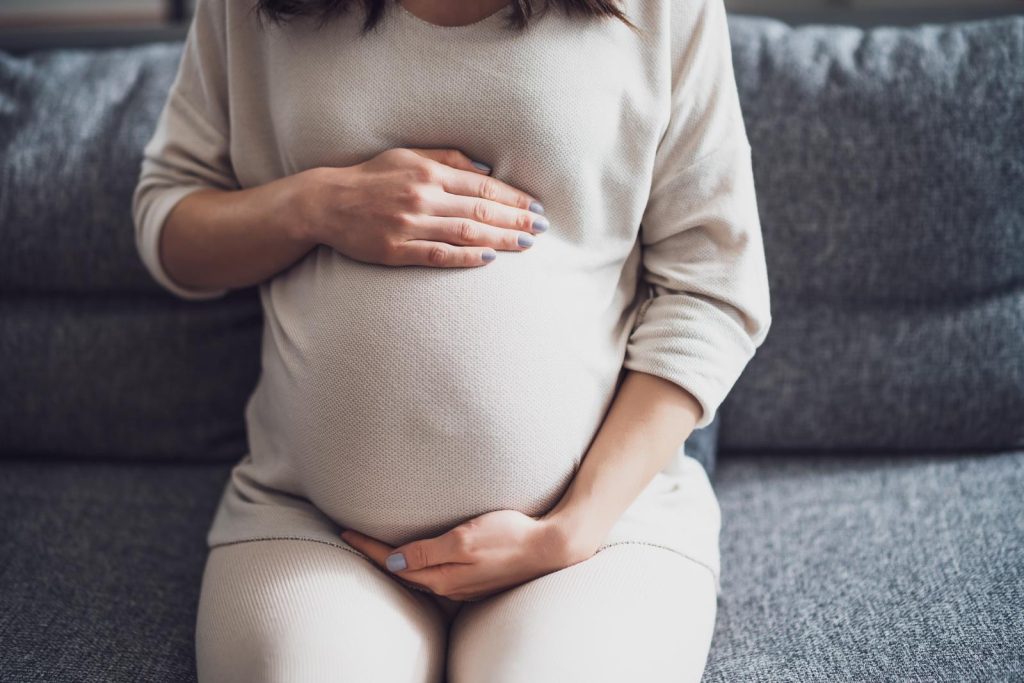 The primary goal of osteopathy in pregnancy is to support the mother’s body as it adapts to the changes brought on by pregnancy. These changes include the body’s centre of gravity shifting, increased weight, hormonal fluctuations, and the physical demands of carrying a baby. Osteopathy helps in maintaining balance, alleviating strain on the body, and enhancing overall wellbeing.
The primary goal of osteopathy in pregnancy is to support the mother’s body as it adapts to the changes brought on by pregnancy. These changes include the body’s centre of gravity shifting, increased weight, hormonal fluctuations, and the physical demands of carrying a baby. Osteopathy helps in maintaining balance, alleviating strain on the body, and enhancing overall wellbeing. Alleviating Common Pregnancy DiscomfortsPregnancy, while a time of great joy, can also bring a host of discomforts. Osteopathic treatment is adept at addressing many of these issues, offering a safe and effective way to find relief.
Back Pain Relief
One of the most common complaints during pregnancy is back pain. As the baby grows, the added weight and altered posture can put
significant strain on the back. Osteopathy helps in realigning the spine and
pelvis, reducing pressure on the back muscles and nerves. It can also improve
flexibility and strength in the back, helping to prevent pain from occurring in
the first place.
Pelvic Comfort
The pelvis undergoes significant changes during pregnancy to
prepare for childbirth. These changes can sometimes lead to discomfort and
instability. Our osteopathic techniques can assist in maintaining pelvic balance,
thus reducing pain and discomfort. Proper pelvic alignment is also crucial for a
smoother delivery process.
Improved Circulation
Osteopathic treatment can enhance blood flow and
lymphatic drainage, reducing the risk of swelling, varicose veins, and
haemorrhoids, which are common during pregnancy.
Digestive Relief
As the uterus expands, it can put pressure on the digestive
organs, leading to issues like heartburn or constipation. Osteopathy can help by
improving the mobility and function of these organs, providing relief from
gastrointestinal discomfort.
Stress and Tension Release
Pregnancy can be a stressful time, and stress can
manifest physically in the form of muscle tension, headaches, and fatigue.
Osteopathy offers techniques to release this tension and promote relaxation,
which is beneficial for both the mother and the developing fetus.
Breathing SupportAs the pregnancy progresses, the growing uterus can
restrict lung capacity, making breathing more challenging. Our treatments can
help in opening the diaphragm and improving rib mobility, aiding in more
comfortable and efficient breathing.Preparing for Childbirth
Osteopathy can play a role in preparing the body for
childbirth. By ensuring the pelvis and spine are correctly aligned, it can
potentially facilitate a smoother labour and delivery process.
Postnatal Recovery
Postpartum, osteopathy can assist in the recovery process,
helping to realign the body, strengthen the pelvic floor muscles, and address
any residual pain from childbirth.Osteopathy offers a multitude of benefits for expectant mothers, providing a holistic and non-invasive approach to managing the physical demands of pregnancy. It not only helps in alleviating common discomforts but also prepares the body for childbirth and aids in recovery post-delivery.
Alleviating Common Pregnancy DiscomfortsPregnancy, while a time of great joy, can also bring a host of discomforts. Osteopathic treatment is adept at addressing many of these issues, offering a safe and effective way to find relief.
Back Pain Relief
One of the most common complaints during pregnancy is back pain. As the baby grows, the added weight and altered posture can put
significant strain on the back. Osteopathy helps in realigning the spine and
pelvis, reducing pressure on the back muscles and nerves. It can also improve
flexibility and strength in the back, helping to prevent pain from occurring in
the first place.
Pelvic Comfort
The pelvis undergoes significant changes during pregnancy to
prepare for childbirth. These changes can sometimes lead to discomfort and
instability. Our osteopathic techniques can assist in maintaining pelvic balance,
thus reducing pain and discomfort. Proper pelvic alignment is also crucial for a
smoother delivery process.
Improved Circulation
Osteopathic treatment can enhance blood flow and
lymphatic drainage, reducing the risk of swelling, varicose veins, and
haemorrhoids, which are common during pregnancy.
Digestive Relief
As the uterus expands, it can put pressure on the digestive
organs, leading to issues like heartburn or constipation. Osteopathy can help by
improving the mobility and function of these organs, providing relief from
gastrointestinal discomfort.
Stress and Tension Release
Pregnancy can be a stressful time, and stress can
manifest physically in the form of muscle tension, headaches, and fatigue.
Osteopathy offers techniques to release this tension and promote relaxation,
which is beneficial for both the mother and the developing fetus.
Breathing SupportAs the pregnancy progresses, the growing uterus can
restrict lung capacity, making breathing more challenging. Our treatments can
help in opening the diaphragm and improving rib mobility, aiding in more
comfortable and efficient breathing.Preparing for Childbirth
Osteopathy can play a role in preparing the body for
childbirth. By ensuring the pelvis and spine are correctly aligned, it can
potentially facilitate a smoother labour and delivery process.
Postnatal Recovery
Postpartum, osteopathy can assist in the recovery process,
helping to realign the body, strengthen the pelvic floor muscles, and address
any residual pain from childbirth.Osteopathy offers a multitude of benefits for expectant mothers, providing a holistic and non-invasive approach to managing the physical demands of pregnancy. It not only helps in alleviating common discomforts but also prepares the body for childbirth and aids in recovery post-delivery. 5/5
I have been to many osteopath before at least 3- 4 different ones, but no one has been able to get to the root of the problem. It’s normally a few clicks on the neck and spine and that is it. But, Poonam really focuses on the issue and loosens the tighten muscle. She advises on what exercises to do, pillow support for the neck and much more. My neck and shoulders feel much better now.
5/5
I have been to many osteopath before at least 3- 4 different ones, but no one has been able to get to the root of the problem. It’s normally a few clicks on the neck and spine and that is it. But, Poonam really focuses on the issue and loosens the tighten muscle. She advises on what exercises to do, pillow support for the neck and much more. My neck and shoulders feel much better now.
 John Doe
MHV Clinic Patient
John Doe
MHV Clinic Patient The pelvis is not only the cradle that supports the growing fetus but also forms part of the birth canal through which the baby will pass during delivery. Optimal pelvic alignment is therefore essential for easing the childbirth process. Misalignments or restrictions in the pelvic area can lead to complications such as prolonged labour, difficulty in baby’s positioning, and increased likelihood of interventions like caesarean sections.
The pelvis is not only the cradle that supports the growing fetus but also forms part of the birth canal through which the baby will pass during delivery. Optimal pelvic alignment is therefore essential for easing the childbirth process. Misalignments or restrictions in the pelvic area can lead to complications such as prolonged labour, difficulty in baby’s positioning, and increased likelihood of interventions like caesarean sections.
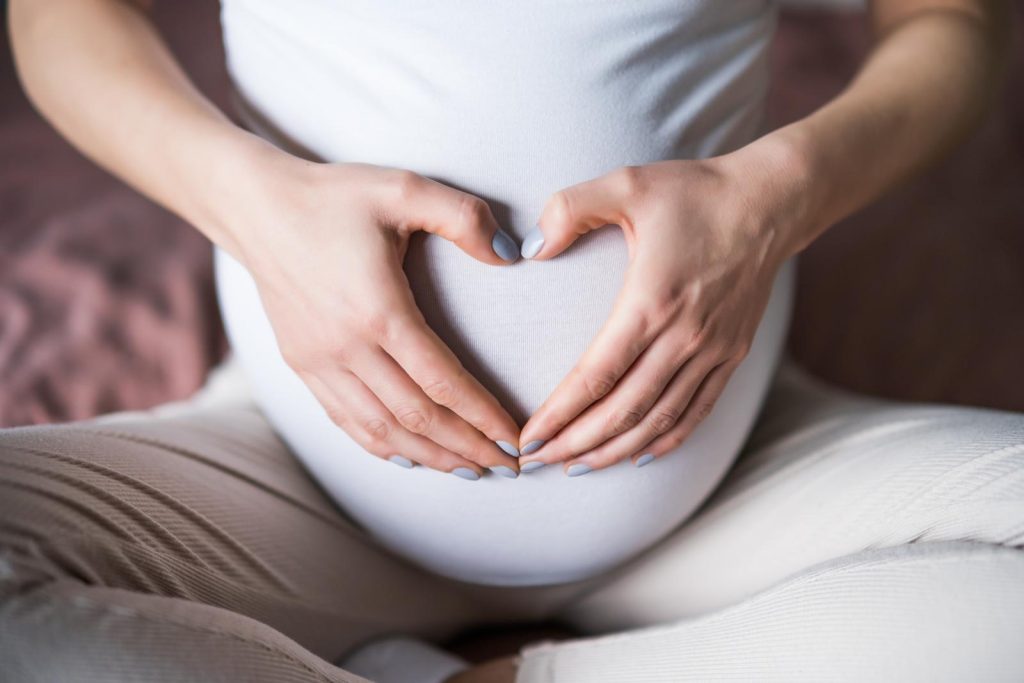 Through gentle osteopathic manipulations, we aim to ensure that the pelvic bones, muscles, and ligaments are well-aligned and functioning optimally. This includes addressing any asymmetry or tension in the pelvic area that could hinder the labour process. Proper alignment of the pelvis can provide more space for the baby to descend and can facilitate better positioning of the baby for delivery.Additionally, optimising pelvic alignment can also contribute to pain relief during pregnancy. It helps in balancing the stresses and strains placed on the body, thereby reducing discomfort in the lower back, hips, and pelvic region. This not only contributes to a more comfortable pregnancy but also to a state of physical readiness for the demands of childbirth.Our osteopathic treatments at MHV Clinic are tailored to support the natural process of childbirth. By focusing on pelvic alignment, we aim to empower expectant mothers with a sense of physical preparedness and confidence as they approach labour and delivery. This proactive approach to maternal health underscores our commitment to providing comprehensive care that addresses the unique needs of women during this transformative phase of life.
Through gentle osteopathic manipulations, we aim to ensure that the pelvic bones, muscles, and ligaments are well-aligned and functioning optimally. This includes addressing any asymmetry or tension in the pelvic area that could hinder the labour process. Proper alignment of the pelvis can provide more space for the baby to descend and can facilitate better positioning of the baby for delivery.Additionally, optimising pelvic alignment can also contribute to pain relief during pregnancy. It helps in balancing the stresses and strains placed on the body, thereby reducing discomfort in the lower back, hips, and pelvic region. This not only contributes to a more comfortable pregnancy but also to a state of physical readiness for the demands of childbirth.Our osteopathic treatments at MHV Clinic are tailored to support the natural process of childbirth. By focusing on pelvic alignment, we aim to empower expectant mothers with a sense of physical preparedness and confidence as they approach labour and delivery. This proactive approach to maternal health underscores our commitment to providing comprehensive care that addresses the unique needs of women during this transformative phase of life.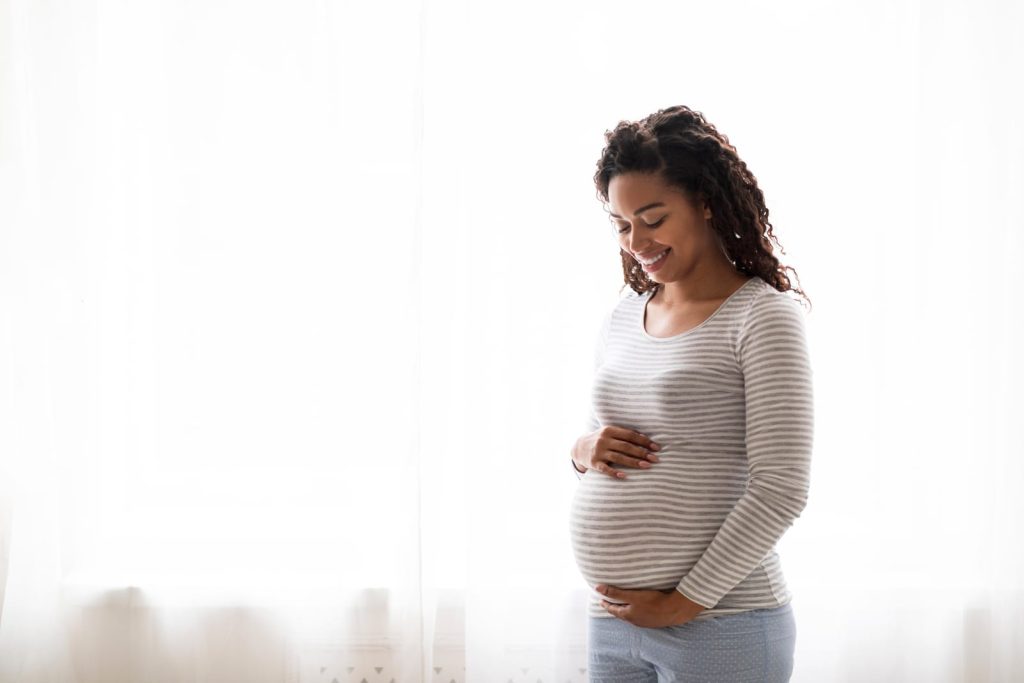
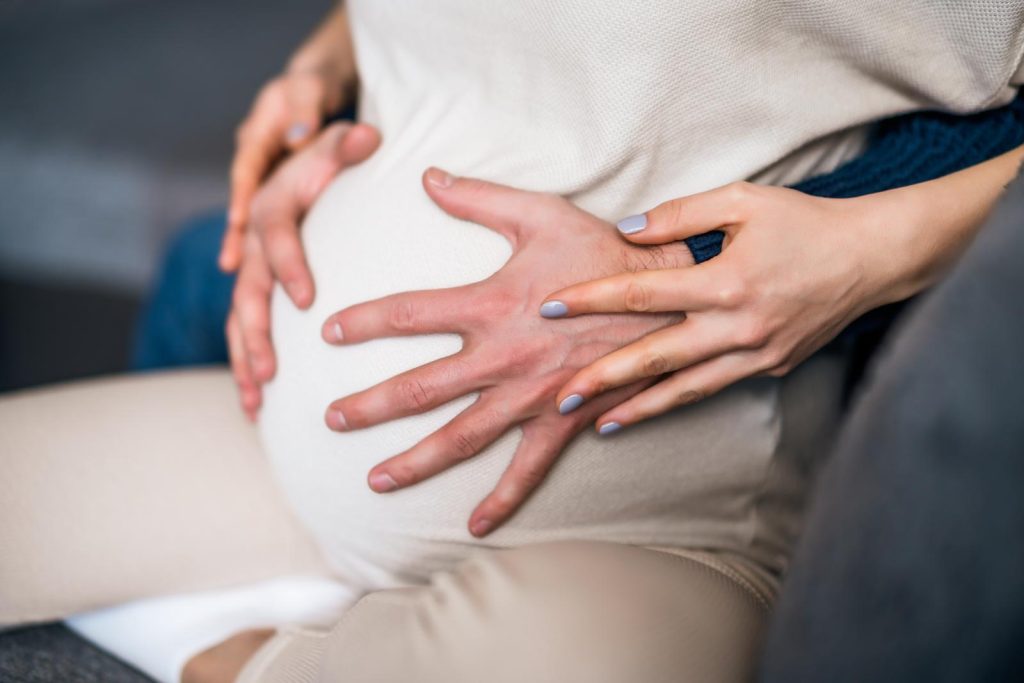 Guidance on Postnatal Exercise and Activities
Our osteopaths provide advice
on appropriate postnatal exercises and activities. This guidance is essential to
ensure that new mothers engage in activities that support recovery and avoid
those that could exacerbate any postnatal conditions.
Collaborative Care
In some cases, we may work in conjunction with other
healthcare professionals, such as midwives, physiotherapists, or general
practitioners, to provide comprehensive postnatal care. This collaborative
approach ensures that new mothers receive holistic support tailored to their
individual needs.
Long-term Health Maintenance
Beyond immediate postnatal recovery,
osteopathy can play a role in maintaining long-term musculoskeletal health.
Regular osteopathic check-ups can help address any ongoing issues and
prevent future musculoskeletal problems.
Postnatal Recovery
Postpartum, osteopathy can assist in the recovery process,
helping to realign the body, strengthen the pelvic floor muscles, and address
any residual pain from childbirth.
Postnatal osteopathy offers a vital support system for new mothers. Through gentle, personalised treatments, it aids in the recovery process, alleviates discomfort, and contributes to the overall physical and emotional well-being of women navigating the postpartum period.At MHV Clinic, our goal is to guide you through this decision-making process,
ensuring you have a clear understanding of both approaches. Our team is
dedicated to helping you choose the treatment path that aligns best with your
health needs and personal preferences, setting you on the course to optimal
nerve health and overall wellness.
BOOK NOW
CONTACT US
At MHV Clinic, we take pride in offering top-tier osteopathic care, ensuring that
each patient receives the attention, care, and expertise needed to achieve
optimal health and relief from nerve-related discomfort.
BOOK NOW
CONTACT US
At MHV Clinic, we take pride in offering top-tier osteopathic care, ensuring that
each patient receives the attention, care, and expertise needed to achieve
optimal health and relief from nerve-related discomfort.
BOOK NOW
CONTACT US
Guidance on Postnatal Exercise and Activities
Our osteopaths provide advice
on appropriate postnatal exercises and activities. This guidance is essential to
ensure that new mothers engage in activities that support recovery and avoid
those that could exacerbate any postnatal conditions.
Collaborative Care
In some cases, we may work in conjunction with other
healthcare professionals, such as midwives, physiotherapists, or general
practitioners, to provide comprehensive postnatal care. This collaborative
approach ensures that new mothers receive holistic support tailored to their
individual needs.
Long-term Health Maintenance
Beyond immediate postnatal recovery,
osteopathy can play a role in maintaining long-term musculoskeletal health.
Regular osteopathic check-ups can help address any ongoing issues and
prevent future musculoskeletal problems.
Postnatal Recovery
Postpartum, osteopathy can assist in the recovery process,
helping to realign the body, strengthen the pelvic floor muscles, and address
any residual pain from childbirth.
Postnatal osteopathy offers a vital support system for new mothers. Through gentle, personalised treatments, it aids in the recovery process, alleviates discomfort, and contributes to the overall physical and emotional well-being of women navigating the postpartum period.At MHV Clinic, our goal is to guide you through this decision-making process,
ensuring you have a clear understanding of both approaches. Our team is
dedicated to helping you choose the treatment path that aligns best with your
health needs and personal preferences, setting you on the course to optimal
nerve health and overall wellness.
BOOK NOW
CONTACT US
At MHV Clinic, we take pride in offering top-tier osteopathic care, ensuring that
each patient receives the attention, care, and expertise needed to achieve
optimal health and relief from nerve-related discomfort.
BOOK NOW
CONTACT US
At MHV Clinic, we take pride in offering top-tier osteopathic care, ensuring that
each patient receives the attention, care, and expertise needed to achieve
optimal health and relief from nerve-related discomfort.
BOOK NOW
CONTACT US


 5/5
I have been to many osteopath before at least 3- 4 different ones, but no one has been able to get to the root of the problem. It’s normally a few clicks on the neck and spine and that is it. But, Poonam really focuses on the issue and loosens the tighten muscle. She advises on what exercises to do, pillow support for the neck and much more. My neck and shoulders feel much better now.
5/5
I have been to many osteopath before at least 3- 4 different ones, but no one has been able to get to the root of the problem. It’s normally a few clicks on the neck and spine and that is it. But, Poonam really focuses on the issue and loosens the tighten muscle. She advises on what exercises to do, pillow support for the neck and much more. My neck and shoulders feel much better now.
 John Doe
MHV Clinic Patient
John Doe
MHV Clinic Patient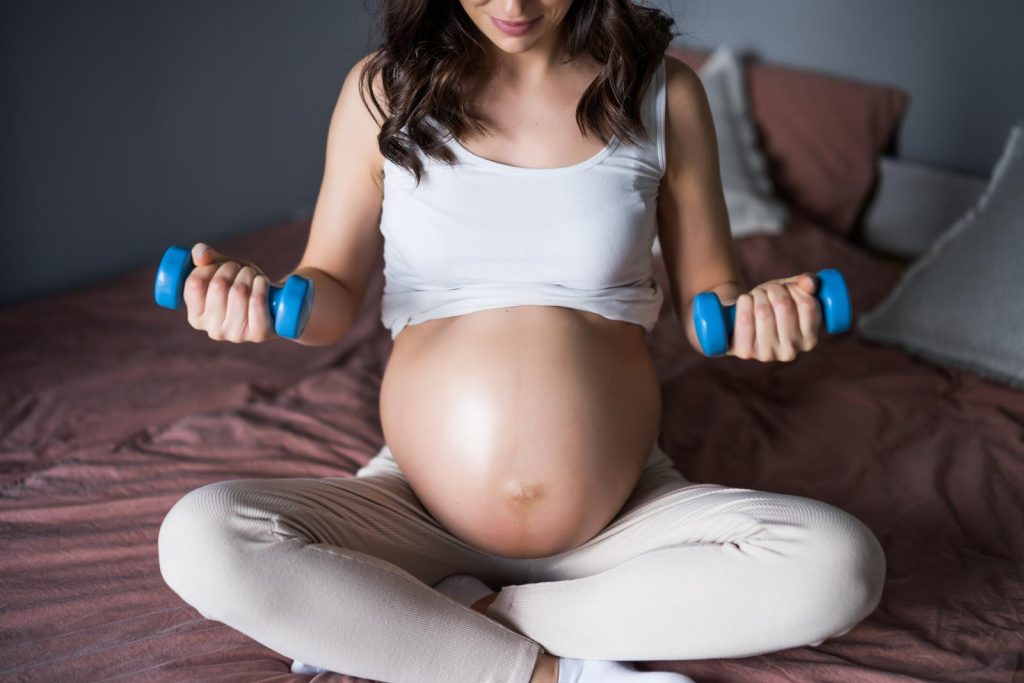
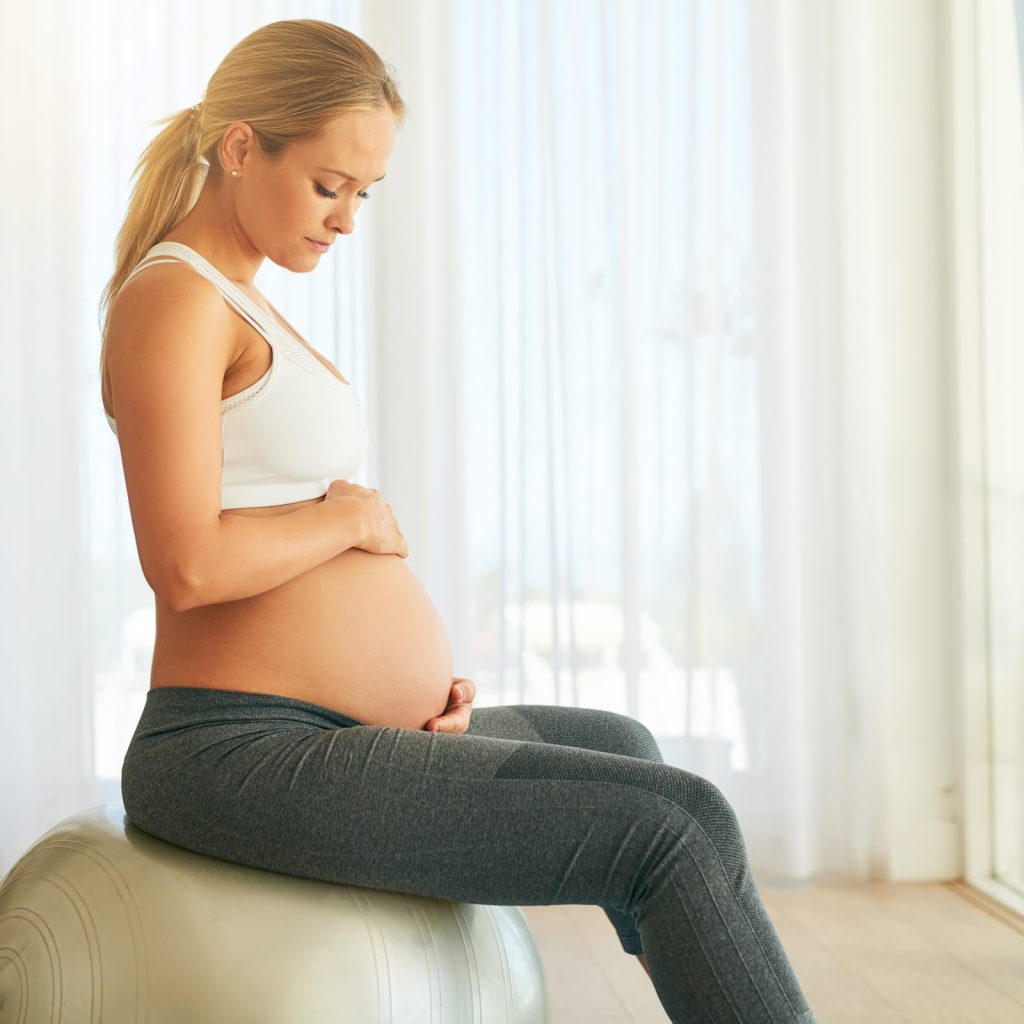 Personalised Care
Each woman’s post-pregnancy journey is unique. Our
osteopaths at MHV Clinic offer personalised care tailored to individual needs
and recovery goals.
Collaborative Care
In some cases, we may work in conjunction with other
healthcare professionals, such as midwives, physiotherapists, or general
practitioners, to provide comprehensive postnatal care. This collaborative
approach ensures that new mothers receive holistic support tailored to their
individual needs.
Long-term Health Maintenance
Beyond immediate postnatal recovery,
osteopathy can play a role in maintaining long-term musculoskeletal health.
Regular osteopathic check-ups can help address any ongoing issues and
prevent future musculoskeletal problems.
Postnatal Recovery
Postpartum, osteopathy can assist in the recovery process,
helping to realign the body, strengthen the pelvic floor muscles, and address
any residual pain from childbirth.
Personalised Care
Each woman’s post-pregnancy journey is unique. Our
osteopaths at MHV Clinic offer personalised care tailored to individual needs
and recovery goals.
Collaborative Care
In some cases, we may work in conjunction with other
healthcare professionals, such as midwives, physiotherapists, or general
practitioners, to provide comprehensive postnatal care. This collaborative
approach ensures that new mothers receive holistic support tailored to their
individual needs.
Long-term Health Maintenance
Beyond immediate postnatal recovery,
osteopathy can play a role in maintaining long-term musculoskeletal health.
Regular osteopathic check-ups can help address any ongoing issues and
prevent future musculoskeletal problems.
Postnatal Recovery
Postpartum, osteopathy can assist in the recovery process,
helping to realign the body, strengthen the pelvic floor muscles, and address
any residual pain from childbirth.